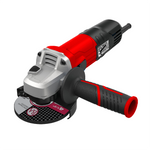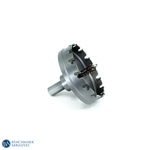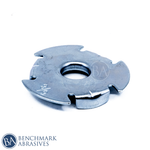
What Are Common Pitfalls To Avoid When Starting With Tool Grinding

When starting a tool grinding project, caution is necessary to avoid typical mistakes that might impede development and harm equipment. Insufficient core understanding frequently causes beginners to struggle, ignoring the important interactions between coolant usage, machine setup, and grinding wheels selection.
Additionally, improper wheel selection, such as selecting the incorrect grit or bond or improper wheel balance, excessive feed rates, insufficient coolant, and inconsistent pressure, can cause overheating, damage to the workpiece, and uneven surface finish. To overcome these difficulties, beginners should emphasize safety, learn the basics, practice wheel maintenance, use coolant, and cautiously measure their work.
In this blog, we will cover all the common pitfalls to avoid when starting with tool grinding.
Inadequate Planning And Understanding
The first common pitfall to avoid when starting with tool grinding is Inadequate planning and understanding of basic concepts, poor machine setup, and improper safety precautions.
-
Inadequate knowledge of grinding principles or basic concepts
This flaw manifests in several ways, such as an insufficient understanding of the complex interrelationships between grinding wheel features, workpiece material, and machine parameters, a failure to perform the wheel dressing and truing process accurately, and a failure to recognize the essential role of coolant plays in preventing heat generation and maintaining surface integrity.
-
Poor Machine Setup
A poorly designed machine setup is a common pitfall that can lead to errors and possible damage, especially when you are a beginner. This flaw covers several crucial areas, like potentially inadequate leveling and calibration of the machine itself, which results in vibrations and uneven grinding. Additionally, improper workpiece fastening can result in movement during grinding, leading to dimensional mistakes and subpar surface finishes; worn or damaged tooling holders and fixtures can induce motion and instability, compromising the precision of the cut.
These common pitfalls can intensify the consequences of additional mistakes, challenging the achievement of consistent and accurate results. Eliminating these problems and guaranteeing successful grinding operations require a careful approach to machine setup, including precise leveling, calibration, and tight and secure workpiece fixturing.
-
Improper Safety Precautions
Improper safety precautions pose a significant and potentially dangerous pitfall for beginners using tool grinding. due to the rotation of the grinding wheels at high speed and the generation of sparks and debris, safety precautions must be strictly followed. One typical mistake is not wearing the right eye protection all the time, which puts one in danger of getting hurt by flying particles. Similarly, avoiding respirators can expose operators to dangerous airborne dust and pollutants affecting their lungs. an essential but frequently ignored aspect is a thorough awareness of the risks of wheel breakage, which can occur due to incorrect mounting, excessive pressure, or wheel defects.
To minimize injuries and guarantee a safe working environment, it is critical to prioritize safety by wearing the proper personal protective equipment and having a solid awareness of machine and wheel safety.
Errors In Wheel Selection And Maintenance
Errors in wheel selection and maintenance are an everyday source of annoyance and disappointing outcomes. Selecting the improper wheel, whether the wrong grit, bond type, or abrasive material for the workpiece, can cause damage and failure. A too-soft wheel can damage or wear down quickly and generate awful results. Too-hard wheels, however, can generate excessive heat and burn the workpiece.
Also, Poor wheel dressing and truing, such as not dressing the wheel regularly or using inadequate dressing tools, can produce uneven cutting and dullness, affecting the surface quality and accuracy. Avoiding wheel balance introduces vibrations that damage the machine or affect the finish.
Improper storage, moisture exposure, or physical damage can also affect wheel performance and safety. Handling these issues with careful wheel selection, accurate dressing and truing, proper balancing, and right storage practices is essential in achieving optimal grinding results and increasing the wheel's durability.
Errors In The Grinding Process
Several errors can ruin a beginner's efforts during the grinding process, producing poor results and potential damage. A typical pitfall is excessive feed rates and cutting depths, which generate excessive heat and can damage the workpiece or grinding wheel.
Also, inconsistent grinding pressure can cause uneven material removal and a rough surface finish. Accuracy and surface quality are compromised when vibrations are ignored, which might be caused by uneven wheels or incorrect machine configuration.
Inadequate grinding parameters that are not taken seriously due to the distinctive properties of the workpiece material can also increase errors or pitfalls. Achieving reliable and superior grinding results requires mastering the fine balance of feed rates, coolant flow, pressure, and vibration control.
Measurement And Inspection Issues
Measurement and inspection issues are delicate areas where beginners mostly fail, which results in inaccuracies and rework. The major problem is the lack of appropriate measuring tools like calipers, gauges, etc., which are crucial for checking dimensions and tolerances. Even with the appropriate tools, wrong measurement techniques, like incorrect readings or uneven pressure application, can lead to major errors.
Also, there are not enough inspection practices, such as failure to examine the finished tool for surface finish, dimensional accuracy, etc. It is impossible to guarantee that the final tool satisfies the requirements if careful measurement and inspection are not conducted during the grinding process. Achieving consistent and dependable tool grinding outcomes requires highlighting the significance of precise measurement techniques, using the right instruments, and putting strict inspection procedures in place.
Tips To Use When First Using Tool Grinder
Following are some useful tips for using a tool grinder, especially for beginners:
- Learn the basics before performing complicated procedures. Begin slowly and concentrate on understanding the fundamentals of grinding.
- To increase safety, wear all the necessary safety gear before grinding operations and always follow the machine’s safety instructions.
- Ensure to practice wheel dressing and truing, as these techniques are essential for getting precise and consistent outcomes.
- Apply generous coolant as they are crucial for minimizing heat buildup and maintaining surface finish.
- Measure and check your grinding process regularly to ensure the accuracy of your work.
- Be sure to get guidance from an expert or experienced tool grinder.



































































